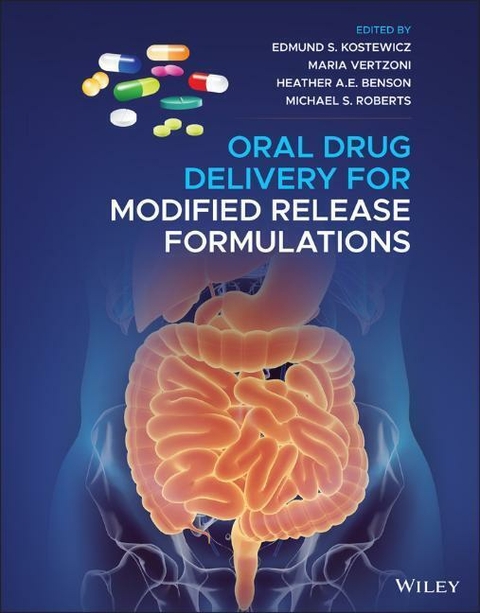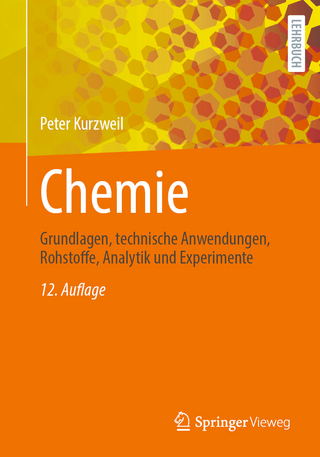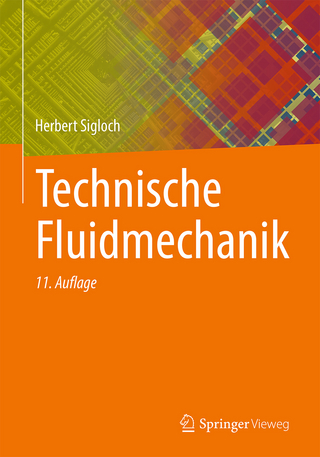
Oral Drug Delivery for Modified Release Formulations
Wiley-Blackwell (Verlag)
978-1-119-77269-9 (ISBN)
»Oral Drug Delivery for Modified Release Formulations« is an up-to-date review of the key aspects of oral absorption from modified-release (MR) dosage forms. This edited volume provides in-depth coverage of the physiological factors that influence drug release and of the design and evaluation of MR formulations.
Divided into three sections, the book begins by describing the gastrointestinal tract (GIT) and detailing the conditions and absorption processes occurring in the GIT that determine a formulation's oral bioavailability. The second section explores the design of modified release formulations, covering early drug substance testing, the biopharmaceutics classification system, an array of formulation technologies that can be used for MR dosage forms, and more. The final section focuses on in vitro, in silico, and in vivo evaluation and regulatory considerations for MR formulations. Topics include biorelevant dissolution testing, preclinical evaluation, and physiologically-based pharmacokinetic modelling (PBPK) of in vivo behaviour. Featuring contributions from leading researchers with expertise in the different aspects of MR formulations, this volume:
- Provides authoritative coverage of physiology, physicochemical determinants, and in-vitro in-vivo correlation (IVIVC)
- Explains the different types of MR formulations and defines the key terms used in the field
- Discusses the present status of MR technologies and identifies current gaps in research
- Includes a summary of regulatory guidelines from both the US and the EU
- Shares industrial experiences and perspectives on the evaluation of MR dosage formulations
»Oral Drug Delivery for Modified Release Formulations« is an invaluable reference and guide for researchers, industrial scientists, and graduate students in general areas of drug delivery including pharmaceutics, pharmaceutical sciences, biomedical engineering, polymer and materials science, and chemical and biochemical engineering.
Edmund S. Kostewicz, PhD is at the Fraunhofer Institute for Translational Medicine and Pharmacology in Frankfurt, Germany.
Maria Vertzoni, PhD is an Assistant Professor of Pharmaceutical Technology and Biopharmaceutics at National and Kapodistrian University of Athens, Greece.
Heather A.E. Benson, PhD is an adjunct Associate Professor at the Curtin Medical School, Curtin University, Australia, where she leads the Skin Delivery Research Group.
Michael S. Roberts, PhD is a Professor of Therapeutics & Pharmaceutical Science at the University of South Australia, and a Professor of Clinical Pharmacology & Therapeutics at the University of Queensland, Australia.
Preface and Introduction and overview of MR formulations
Part I Understanding of physiology and anatomy - factors influencing drug release and absorption from MR formulations
1. Composition of the GI lumen under fasting and fed conditions
a. Composition of gastric fluids under fasting and fed conditions -
Jens Van Den Abeele and Patrick Augustijns
Drug Delivery and Disposition, Department of Pharmaceutical and Pharmacological Sciences, KU Leuven, O&N II, Herestraat 49 - box 921, 3000 Leuven, Belgium
b. Composition of small intestinal fluids under fasting and fed conditions
Edmund Kostewicz
Institute for Pharmaceutical Technology, Goethe University, Max-von-Laure Str. 9, 60439 Frankfurt am Main, Germany
c. Composition of large intestinal fluids under fasting and fed conditions
Christos Reppas and Maria Vertzoni
Department of Pharmacy, National and Kapodistrian University of Athens, Athens, Greece.
2. Gastrointestinal transit and hydrodynamics under fasting and fed conditions
Mirko Koziolek
Department of Biopharmaceutics and Pharmaceutical Technology, Center of Drug Absorption and Transport, Ernst Moritz Arndt University of Greifswald, Greifswald, Germany
3. Intestinal Epithelium and Drug Transporters
Karelle Menochet*1, Hugues Chanteux*2, Jamie Henshall1, Jean-Marie Nicolas2, Sara Wright1, Judith van Asperen2 and Anna-Lena Ungell2
1UCB Celltech, Slough, United Kingdom
2UCB Biopharma SPRL, Braine-l'Alleud, Belgium
4. The interplay between drug release and intestinal gut-wall metabolism
Adam S. Darwich1, Oliver J.D. Hatley2, Andres Olivares-Morales1,3, Farzaneh Salem2, Alison Margolskee1, Amin Rostami-Hodjegan1,2
1Centre for Applied Pharmacokinetic Research, Manchester Pharmacy School, University of Manchester, Manchester M13 9PT, United Kingdom
2Certara, Blades Enterprise Centre, Sheffield, S2 4SU, United Kingdom
3Roche Pharma Research and Early Development (pRED), Roche Innovation Center Basel, Basel, Switzerland
Part II Design of MR formulations - considerations, mechanisms and technologies
5. Preformulation considerations for design of oral modified-release products
Christel A. S. Bergstroem1 and Rene Holm2
1 Department of Pharmacy, Uppsala University, Uppsala Biomedical Centre P.O. Box 580, SE-751 23 Uppsala, Sweden.
2 Drug Product Development, Janssen Research & Development, Johnson & Johnson, Turnhoutseweg 30, 2430 Beerse, Belgium.
6. The Application of Biopharmaceutics Classification Systems to Modified Release Formulations
James M Butler
Biopharmaceutics, Drug Product Design & Dev
GlaxoSmithKline R&D
Ware UK
7. Technologies and mechanisms for oral modified release by monolithic and multiparticulate delivery systems
Gaia Colombo*, Stavros Politis, Alessandra Rossi
University of Ferrara
44121 FERRARA (Italy)
8. Lipid based Formulations
Joseph P. O'Shea, Caitriona M. O'Driscoll, Brendan T. Griffin
Pharmacodelivery Group, School of Pharmacy, University College Cork, Ireland
9. Strategies for MR formulation development: Mesoporous Silica
Georgios K. Eleftheriadis, Eleni Kontogiannidou, Christina Karavasili, Dimitrios G. Fatouros
Department of Pharmacy, Laboratory of Pharmaceutical Technology, Aristotle University of Thessaloniki, 54124 GR
10. Hot melt extrusion technology for modified release (MR) formulation development
Harpreet Sandhu, Siva Ram Kiran Vaka, Dipen Desai, Paras Jariwala, Aruna Railkar, Wantanee Phuapradit and Navnit Shah
Paras Jariwala, Aruna Railkar, Wantanee Phuapradit
Kashiv Pharma LLC, 995 Route 202/206 Bridgewater, NJ 08807
11. Gattefosse: Strategies for MR formulation development - Lipids
Yvonne Rosiaux, Vincent Jannin and Cecile Morin
Gattefosse SAS - 36 chemin de Genas
69804 Saint Priest France
12. Evonik: Polymethacrylates for Modified Release Formulations
Miriam Robota, Felix Hofmann and Meike Pistner
Meike Pistner
Evonik Nutrition & Care GmbH, Darmstadt, Germany
13. Capsugel - Strategies for Modified Release oral formulation development
Aurelien Sivert1, Randy Wald2, Chris Craig2, Hassan Benameur1
Randy Wald
1Capsugel/Lonza R&D, Strasbourg, France 2Capsugel/Lonza R&D, Bend, Oregon USA
Part III Evaluation of MR formulations
14. Dissolution equipment and hydrodynamic considerations for evaluating MR formulations
Sandra Klein
Department of Biopharmaceutics and Pharmaceutical Technology, Center of Drug Absorption and Transport, Ernst Moritz Arndt University of Greifswald, Greifswald, Germany
15. The role and application of dissolution media for the investigation of modified release formulations
Institute for Pharmaceutical Technology, Goethe University, Max-von-Laue Str. 9, 60439 Frankfurt am Main, Germany
16. Biorelevant dissolution testing to forecast the in vivo performance of modified release formulations
Mirko Koziolek
Department of Biopharmaceutics and Pharmaceutical Technology, Center of Drug Absorption and Transport, Ernst Moritz Arndt University of Greifswald, Greifswald, Germany
17. In vitro dissolution tests for considering dissolution in the lower intestine
Constantinos Markopoulos, Maria Vertzoni
1Faculty of Pharmacy, School of Health Sciences, National & Kapodistrian University of Athens, Greece
18. Preclinical evaluation - animal models to evaluate MR formulations
Rene Holm
Drug Product Development, Janssen Research and Development, Johnson & Johnson, Turnhoutseweg 30, 2340 Beerse, Belgium. E-mail: rholm@its.jnj.com
19. In vitro - In vivo correlations for modified release formulations
Ivana Tomic1 and Jean-Michel Cardot2
1Novartis Pharma AG, Technical R&D, Physic Garden 3 - 3.14.49, CH-4002 Base, Switzerland
2Universite Clermont Auvergne MEDIS, CHU Clermont-Ferrand, CIC1405, INSERM, F-63000 Clermont-Ferrand, France
20. Application of the Simcyp Population-Based PBPK Simulator to the Modelling of MR Formulations
Nikunjkumar Patel, Shriram M. Pathak and David B. Turner
Simcyp Ltd (A Certara Company); UK
21. PK-Sim (R) for modeling oral drug delivery of modified release formulations
Donato Teutonico, Michael Block, Lars Kuepfer, Juri Solodenko, Thomas Eissing*, Katrin Coboeken
Michael Block, Lars Kuepfer, Katrin Coboeken
Bayer AG, Clinical Pharmacometrics, Germany
22. Clinical Evaluation - In vivo bioequivalence assessment of MR formulations
Konstantina Soulele, Panos Macheras
Laboratory of Biopharmaceutics and Pharmacokinetics, Faculty of Pharmacy, University of Athens, Athens 15771, Greece
23. U.S. Regulatory Considerations for Modified Release Products
Hao Zhu, Ramana S. Uppoor, Mehul Mehta
Office of Clinical Pharmacology, U.S. Food and Drug Administration, 10903 New Hampshire Avenue, Silver Spring, MD 20993, USA
24. Regulatory Assessment, European Perspective
Malin Filler and Anders Lindahl
25. Industry perspectives for the evaluation of MR formulations
Irena Tomaszewska and Mark McAllister
Pfizer, Medicinal Sciences, Sandwich, UK
| Erscheinungsdatum | 19.04.2022 |
|---|---|
| Verlagsort | Hoboken |
| Sprache | englisch |
| Maße | 224 x 284 mm |
| Gewicht | 1464 g |
| Einbandart | gebunden |
| Themenwelt | Medizin / Pharmazie ► Pharmazie |
| Naturwissenschaften ► Chemie ► Technische Chemie | |
| Technik ► Umwelttechnik / Biotechnologie | |
| ISBN-10 | 1-119-77269-9 / 1119772699 |
| ISBN-13 | 978-1-119-77269-9 / 9781119772699 |
| Zustand | Neuware |
| Informationen gemäß Produktsicherheitsverordnung (GPSR) | |
| Haben Sie eine Frage zum Produkt? |
aus dem Bereich


